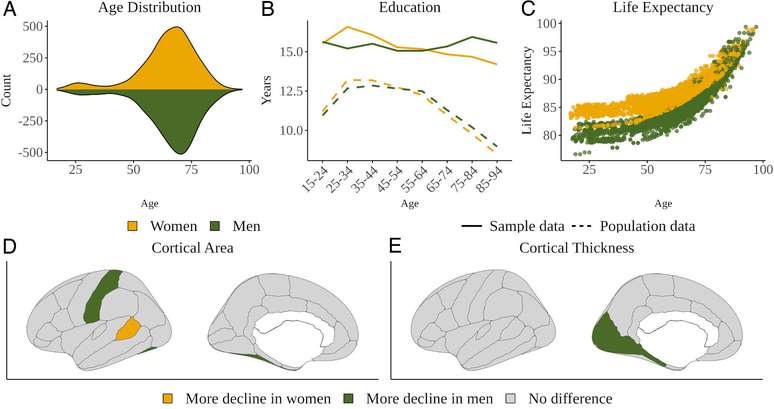The disease affects up to 15% of women of reproductive age and is a major cause of female infertility
Summary
Laura Aguiar, 37, discovered she had endometriosis, a condition in which the tissue lining the inner layer of the uterus grows outside the uterus and affects 10% to 15% of women of reproductive age. She underwent surgery and now has six-monthly check-ups with a specialist to check the effectiveness of the procedure.
Laura Aguiar, 37, has always had menstrual cramps. She considered this discomfort to be something common, since she regularly underwent check-ups at the gynecologist and underwent routine examinations. However, about 2 years ago, she Laura began to experience intense and persistent pain, suspecting that something more serious was happening. Seeking answers, she sought specialist care and was diagnosed with endometriosis.
About a year ago, he underwent surgery to treat the condition. “The main change was the absence of pain. I spent almost all my days in pain and being free from it is truly a relief,” says Laura.
After the surgery, he began to be monitored every six months by a specialist to check the effectiveness of the surgery. Because the results were satisfactory, he now claims queries annual routine.
Laura warns on the subject: “Gynecologists should require this type of examination as mandatory for women, because finding out about it in extreme cases, when there is intense pain, infertility problems and the need for surgery, causes a lot of suffering. I felt very frustrated for always having my gynecological exams updated and for not having received the diagnosis sooner,” she says.
Pain and separation
Endometriosis is a condition in which tissue that normally lines the inner layer of the uterus (endometrium) grows outside the uterus, in places where it shouldn’t be. This tissue can develop in the abdominal cavity, ovaries, and internal organs such as the intestines and bladder.
It is estimated that between 10% and 15% of women of reproductive age are affected by this condition. In Brazil this represents approximately 8 million women. In 2022, after the revelation that singer Anitta has endometriosis, the topic gained more visibility and caused many women to start wondering if they could suffer from the same problem.
Endometriosis is the leading cause of female infertility and one of the most common reasons women miss work due to disabling pelvic pain.
Minimally invasive surgery
The disease has no cure, but it can be treated. The most effective method is excision surgery, which involves removing all inflamed tissue from the pelvis, and is considered to be of medium to high complexity. Although the procedure cannot cure completely, it significantly reduces the need for further interventions, which occur in less than 10% of cases.
Gynecologist Renata Mieko Hayashi, coordinator of the Women’s Health area of the São Marcelino Champagnat Hospital, in Curitiba (PR), explains that the procedure may require a multidisciplinary team.
“The recommended intervention is the minimally invasive technique: videolaparoscopy or robotic surgery. The most recommended surgeon is a gynecologist experienced in the treatment of endometriosis. The team is made up of specialists in other sectors: coloproctologist, urologist, sometimes thoracic surgeon. But, since it is a gynecological pathology, it must be coordinated by the gynecologist,” she says.
In some cases, experts choose to administer hormonal contraceptives or progesterone. Since they are antagonists of estrogen, which is the hormone responsible for the growth of the endometrium, they can curb the condition. However, medications only control the symptoms but cannot cure the disease.
Symptoms and diagnosis
Some symptoms are common in patients with this condition. Severe, disabling pelvic pain is an important warning sign. Additionally, severe menstrual cramps and pain during sexual intercourse are not normal and may also indicate endometriosis. There are symptoms that include pain, diarrhea or other problems with bowel movements during menstruation, as well as infertility.
The disease can be diagnosed during adolescence, which is why parents and guardians need to be vigilant and know how to guide teenagers. It is advisable to take them to the gynecologist immediately after menarche, that is, the first menstruation.
The diagnosis of endometriosis is clinical, based on the patient’s reports and physical examinations carried out by the doctor. Regular visits to your gynecologist can help identify signs of the condition. Imaging, however, represents a great advance towards an accurate and complete diagnosis.
“We have made significant progress with imaging tests. Today Brazil is one of the world references in the treatment of endometriosis”, explains Renata Hayashi. “Transvaginal ultrasound, for example, is a relatively simple test that allows us to map endometriosis. Although the patient requires intestinal preparation, with the use of a laxative the exam takes place without problems.”
inspires transformation in the world of work, in business, in society. Compasso, a content and connection agency, is born.
Source: Terra
Ben Stock is a lifestyle journalist and author at Gossipify. He writes about topics such as health, wellness, travel, food and home decor. He provides practical advice and inspiration to improve well-being, keeps readers up to date with latest lifestyle news and trends, known for his engaging writing style, in-depth analysis and unique perspectives.







